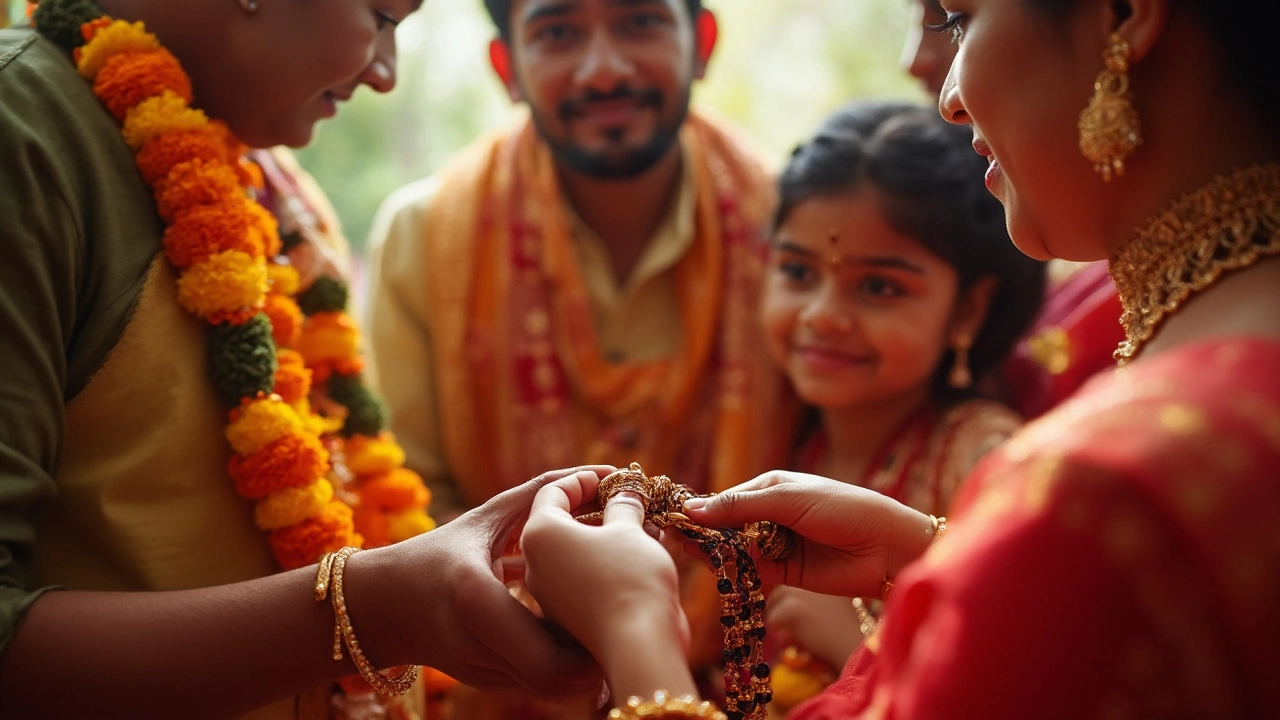Mangalsutra Symbolism: Meaning, Tradition, and Modern Twist
When you hear the word Mangalsutra, a sacred necklace exchanged during Hindu weddings that represents marital commitment and protection. Also known as mangalsutra, it stands as a daily reminder of love, duty, and the bond between partners. Mangalsutra symbolism goes beyond a piece of jewelry – it’s a cultural badge that signals a woman's married status and her family's blessings. Mangalsutra gifting, who presents the necklace and why it matters varies by region, but the core idea stays the same: the act of gifting cements social support for the couple. Likewise, Mangalsutra tying, the ceremony where the groom fastens the necklace on the bride is a ritual that marks the official start of married life and often involves prayers for longevity and prosperity. These three pieces – the necklace, the gifting, and the tying – form a tight semantic triple that defines the tradition.
Key Aspects of Mangalsutra Symbolism
Every region adds its own flavor to the necklace, making Mangalsutra design, the style, material, and motifs used in the piece a mirror of local culture. In South India, you’ll see simple gold strands with black beads, while North Indian designs often feature intricate goldwork and a central pendant shaped like a deity or a lotus. The choice of gold purity, the presence of black beads, and any added gemstones each carry a symbolic weight – black beads are said to ward off evil, and a central pendant can represent the divine couple. These design choices are not just aesthetic; they link directly to larger Hindu wedding customs, rituals and beliefs surrounding marriage in India that emphasize protection, prosperity, and spiritual unity. Understanding how design reflects regional beliefs helps you read the necklace like a storybook: each element tells a part of the couple’s journey and the community’s hopes for them.
Today, many couples blend tradition with personal style. Some swap heavy gold for lighter alloys or add contemporary charms that reflect shared interests, while still keeping the essential symbolism intact. This modern twist shows that the mangalsutra can evolve without losing its core meaning – it remains a symbol of commitment, a protective talisman, and a cultural link across generations. In the collection below, you’ll find articles that dive deeper into who gives the mangalsutra, how it’s tied in different states, what makes an ideal design for everyday wear, and even how divorced women navigate its cultural significance. Grab a cup of tea and explore the full range of insights that will help you appreciate every nuance of mangalsutra symbolism.
